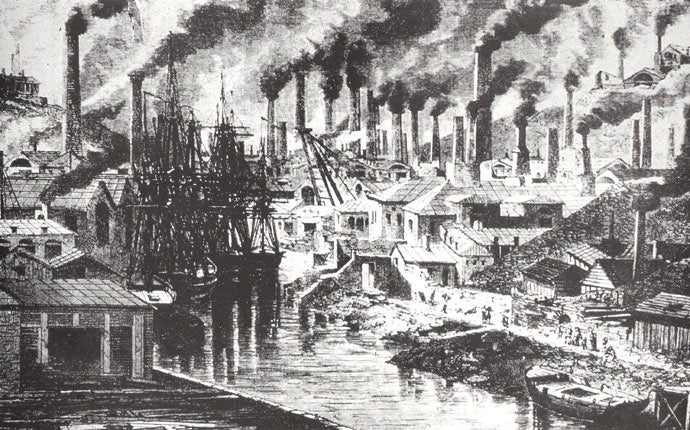Copperopolis to rise again

Your support helps us to tell the story
From reproductive rights to climate change to Big Tech, The Independent is on the ground when the story is developing. Whether it's investigating the financials of Elon Musk's pro-Trump PAC or producing our latest documentary, 'The A Word', which shines a light on the American women fighting for reproductive rights, we know how important it is to parse out the facts from the messaging.
At such a critical moment in US history, we need reporters on the ground. Your donation allows us to keep sending journalists to speak to both sides of the story.
The Independent is trusted by Americans across the entire political spectrum. And unlike many other quality news outlets, we choose not to lock Americans out of our reporting and analysis with paywalls. We believe quality journalism should be available to everyone, paid for by those who can afford it.
Your support makes all the difference.One of the Industrial Revolution’s least known, yet most important, monuments is to rise again.
The remains of ‘Copperopolis’ – once the epicentre of the world’s copper industry – are to be preserved as a major heritage complex on a currently derelict 12 acre site in Swansea, South Wales.
The site is home to 14 historically important listed 19th century industrial structures, including a canal, a locomotive shed, a rolling mill, traces of a narrow gauge railway, a copper-testing laboratory building and two engine houses. One of the great steel steam engines still survives inside its engine house.
The area, all that remains of the original hundred acre complex, is to be developed as a heritage centre by Swansea University and the local council, according to BBC History Magazine .
Copperopolis - the world’s first globally integrated heavy industrial complex - helped Britain rule the waves in the late 18th and early 19th century by supplying the Admiralty with most of the copper sheeting it needed to strengthen the hulls of the Royal Navy’s warships.
Later much of the copper cable, needed to connect the world telegraphically was also produced there. The complex had started life back in the 1720s when it was founded by merchants from Bristol. One of its initial activities had been the production of copper ‘currency tokens’ used by British slave-traders and other merchants in West Africa.
For some 30 years - in the mid 19th century - Copperopolis reigned supreme over the planet’s copper industry, manufacturing almost 70% of the world’s copper goods.
It sucked in copper ore from mines worldwide – and spewed out copper ingots, sheeting, wire and other copper products to a global market.
Although the site is to be preserved, there are remarkably very few images of and relatively little documentation about the complex and its vast workforce in its 19th and early 20th century heyday.
Now, one of the key figures in the preservation project, Swansea University’s Professor Huw Bowen, is appealing to the public for photographs, drawings, paintings, diaries, letters, recordings and other ‘undiscovered’ material which could help in the process of bringing Copperopolis and its workforce back to life again.
Join our commenting forum
Join thought-provoking conversations, follow other Independent readers and see their replies
Comments